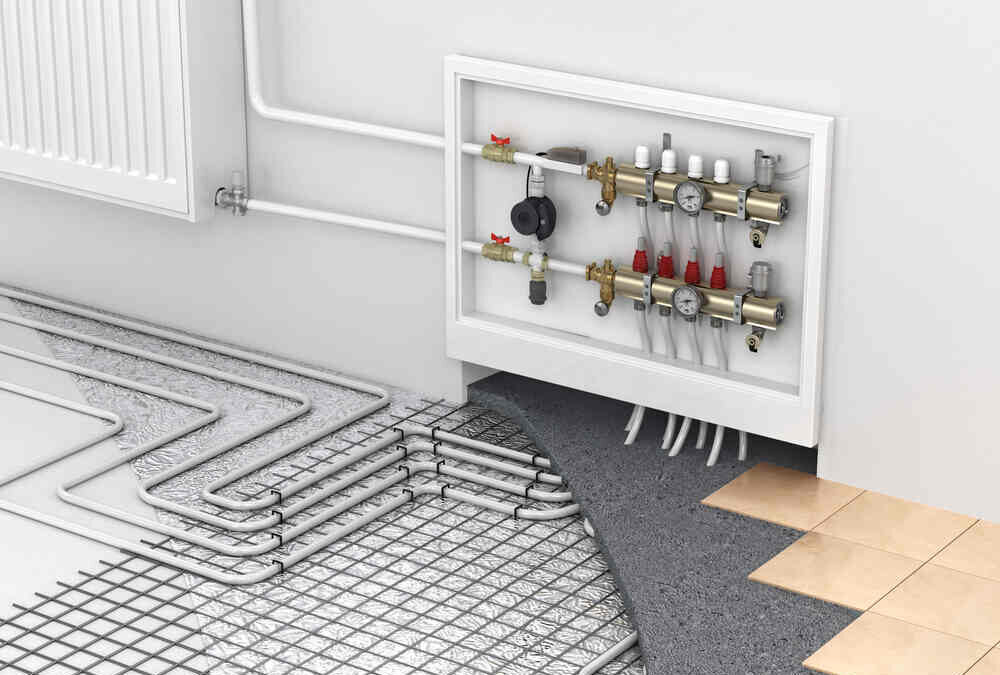Winter can hit hard, requiring you to take advantage of assisted air conditioning for the interior of your home. Homeowners around the country prefer to avoid having a gas or electric furnace on their properties, as burning gas or wood is not a habit that they are comfortable continuing indefinitely.
There is hope: a baseboard radiator, which is a safe and simple option for any homeowner to consider. This option provides you with a high degree of flexibility so that you can focus on warming up a particular room in the house that’s always colder than the others.
Install these heaters on the baseboards of each room along any wall and then connect them to a central or individual thermostat. Some models allow you to control each unit’s temperature. Once the heat releases from the baseboard, it rises toward the ceiling, making the entire room warm and comfortable. If you’re still considering which option is best for your home, think about these five reasons to install a baseboard radiator.
1) Baseboard Radiators Allow you to Heat Each Room Individually
This system helps to create a zoned system for all-around comfort. With this installation, you can supply heat directly to a room that you know requires more heat than other rooms. There’s no need to operate a space heater, which could cost you an extra $30 per month. With this option, you can warm specific rooms, units, or spaces based on the occupancy of your property. If you have occupants in your basement or garage, it is an ideal option: those areas generally record more cold draughts than other spaces during the winter.
These systems allow you to create a certain temperature standard for a room or unit of your home. If an occupant prefers their space warmer, you can set the temperature to 75 degrees, while others may prefer a room temperature of 67 degrees. This flexibility allows each person to customize their surroundings and maximize their comfort levels.
2) A Baseboard Radiator is Easy to Install
Every homeowner loves investing in their properties, but they want those investments to last a long time: why install a system only to renew or upgrade it in a year or two? The good news about baseboard radiators is that you can expect them to last. Since the system is less complicated than other heating methods, there are some service issues that you can address as DIY work instead of calling a professional HVAC contractor. With proper maintenance from you and a professional, you can expect this solution to remain in place for up to 30 years.
3) Easy Maintenance and Upkeep
Regarding maintenance, you can always benefit from the knowledge and skills of an HVAC technician. However, to clean your baseboard radiator, you only have to remove the dust and lint from the register on your own. You can use your vacuum cleaner with a brush attachment for the job. There’s no need to service the system throughout the summer to ensure that it operates efficiently, but failing to clean the registers before turning them on after a long time off may result in an odor of burning dust, which can be unpleasant.
4) Baseboard Radiator Heating is an Affordable Option
If you’re sticking to a strict budget, baseboard heating should be your first consideration. Since there’s no need for ductwork installation throughout the home, you’ll save considerably with a baseboard radiator.
5) Baseboard Heaters Operate are Silent
There’s nothing worse than trying to sleep on a cold winter’s night only to hear the constant rumbling of your heating system. While you may eventually get accustomed to these kinds of noises, you’d prefer to eliminate noise completely. The baseboard radiator comes into its own in this regard. These systems are quiet during operation—so quiet that you may not realize the unit is even working as it heats your room. If anything, you may hear slight popping or crackling when the system starts up, but these noises are minimal compared to the heavy rumble of a furnace fan or motor kicking in for the evening.
Apart from these five reasons to consider baseboard radiators, there is another advantage. If you find that the positioning of the unit isn’t delivering sufficient heat to the room, you can move it to another part of the room. If you’re dealing with a larger room and need another unit, you can work towards investing in another one of these systems, which tend to be relatively inexpensive.
If you have an older home undergoing a remodel, baseboard heating may be an ideal option: the unit and installation won’t demand high initial costs to add to your remodeling budget. Using this system during the winter months may also save you significantly on your energy bills.
If you’re still unsure how to choose the best solution for you, speak to an HVAC technician who can weigh your budget against your energy options. With a little assistance, you can select a suitable system to ensure that you remain comfortable for the cold season.



